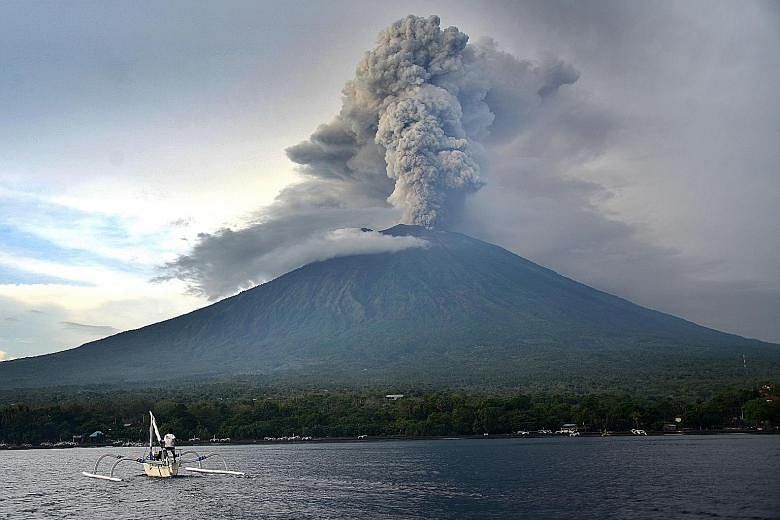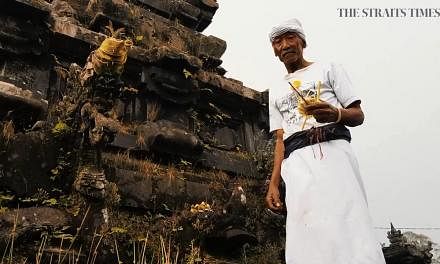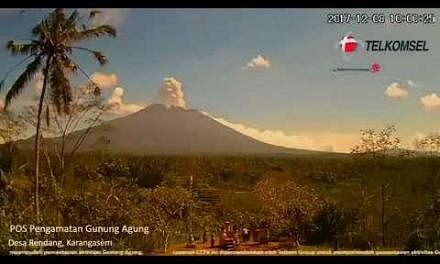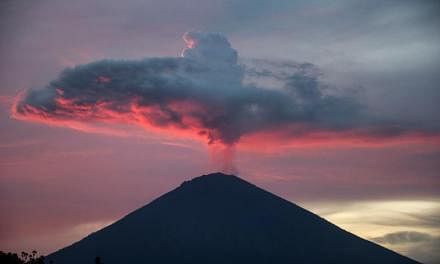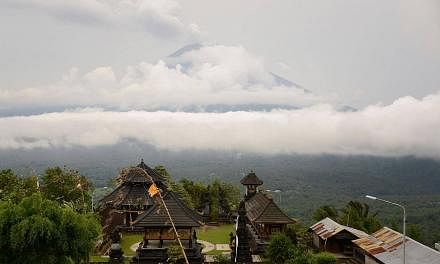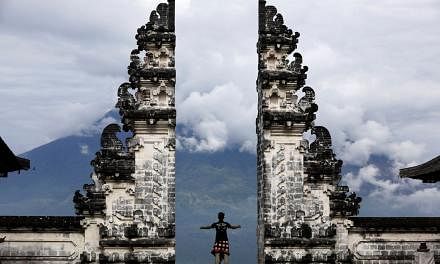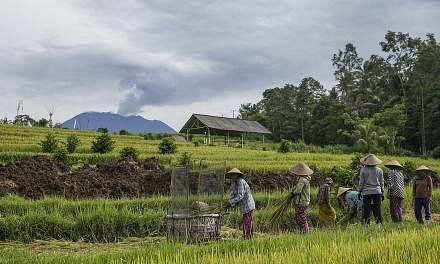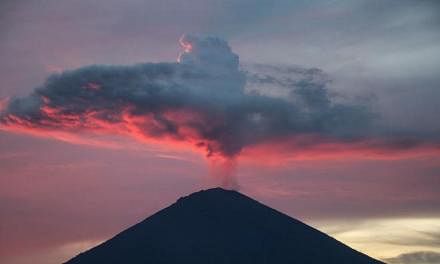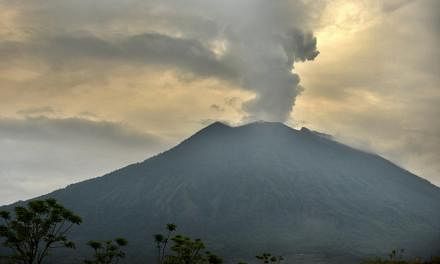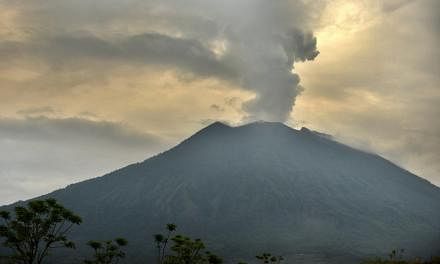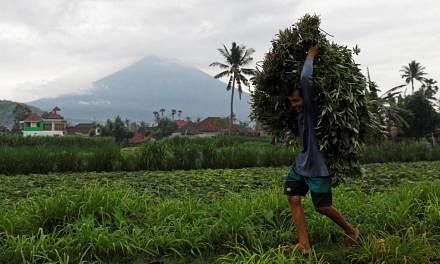In 1991, Mount Pinatubo in the Philippines showered Singapore with ash when it erupted - but Bali's Mount Agung shows no signs of following suit just yet.
Even so, all eyes are on the Indonesian volcano as its two previous eruptions in 1963 and 1843 have shown that it is capable of wreaking significant havoc.
"Both were large eruptions, so there is more interest now," said Mr Christopher Gan, a senior research scientist (applied modelling) at the Centre for Climate Research Singapore.
At the centre, which is part of the Meteorological Service Singapore (MSS), scientists use data to build computer models of what might happen here when volcanoes erupt overseas.
Whether an eruption will affect Singapore depends on two key factors - the height of a volcano's ash plume and the wind direction, Mr Gan told The Straits Times. The higher the ash plume, the more likely that ash would be blown to Singapore, though many other factors such as wind direction also affect this.
When Mount Pinatubo erupted in 1991, ash billowed up to 35km in the air and prevailing winds blew it more than 2,000km to Singapore.
In comparison, ash from the various eruptions on Mount Agung this year has reached up to only around 9km in height. The ash plume in its 1963 eruption reached a similar height of about 10km.
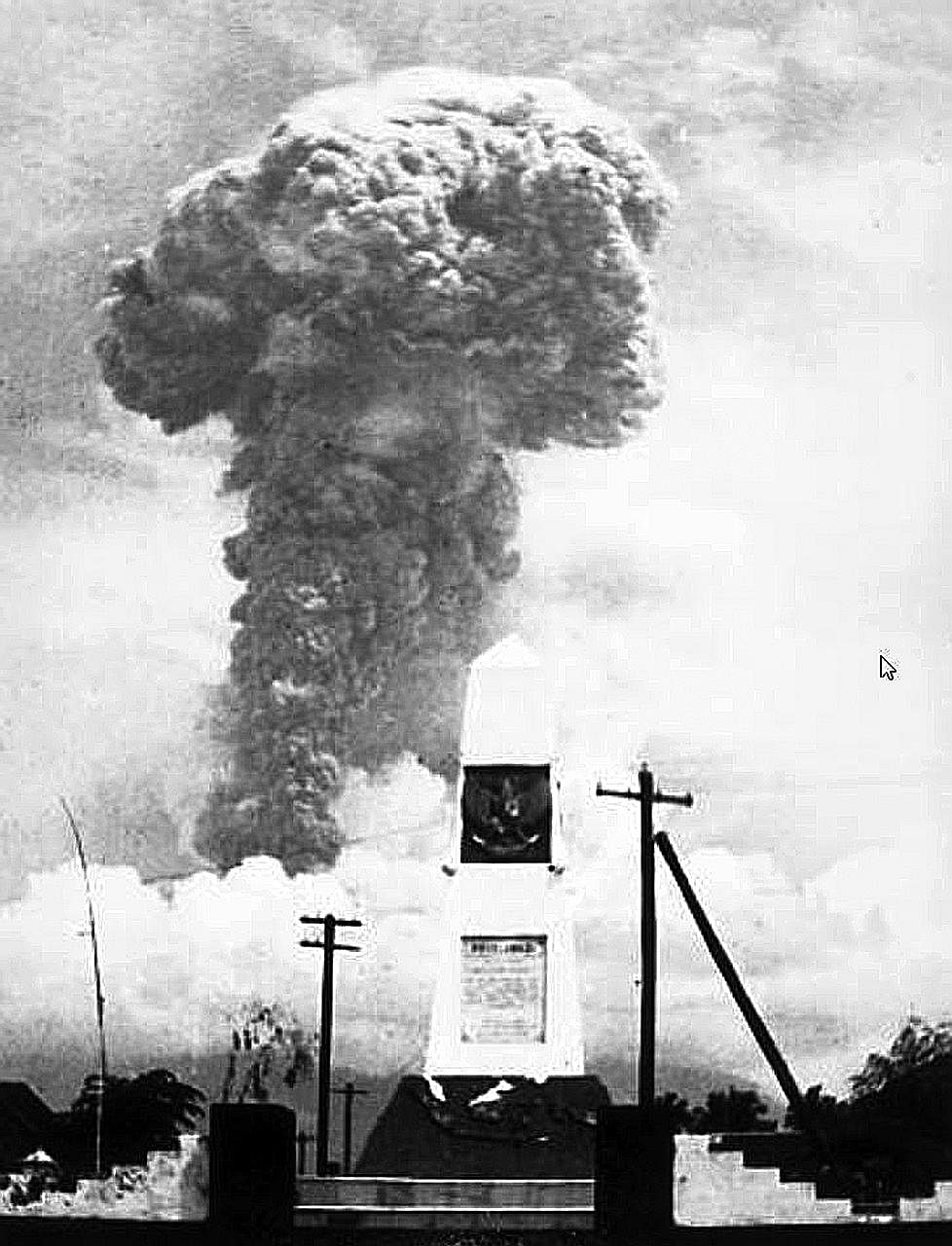
Although the Indonesian volcano is closer to Singapore than Mount Pinatubo, winds have not blown ash in the country's direction so far.
Mount Agung's history of violent eruptions has meant that the Indonesian government is taking no chances. Alert levels have been raised to the maximum, and evacuation efforts for about 100,000 people living in the area are ongoing.
The volcano's 1963 eruption killed about 1,700 people and destroyed several villages. Thousands of others were cut off by hot lava flows and had to rely on supplies from aerial drops.
At the time, many deaths were the result of pyroclastic flows, which are hot, fast-moving clouds of rock fragments and gas from inside volcanoes.
Volcanic activity on Mount Agung began growing in September and resulted in mass evacuations, although some people returned when the alert level was lowered the next month.
Last month, the volcano began belching thick plumes of smoke and ash, causing flights to be cancelled and leaving thousands of tourists stranded.
According to the MSS website, Mount Agung erupted again yesterday at 2.45pm.
The volcano lies on the Pacific Ring of Fire - an area where the shifting tectonic plates in the earth's crust result in a high number of earthquakes and volcanoes.
Indonesia has more active volcanoes than any other country. Six in 10 of its 127 volcanoes are active.
In addition to Mount Agung, both Mount Dukono - a volcano on an island that is part of Indonesia's North Maluku province - and Mount Sinabung in North Sumatra have erupted in the past week.
Even then, experts around the world have said that it is very difficult to predict how large any eruption of Mount Agung will be, with some saying it could match the 1963 eruption and others saying it would not be as big.
"The activity within the volcano is very dynamic. Magma within the volcano is interacting with the surrounding rocks, and there are also new injections of magma from deeper in the earth's crust," said Mr Gan. "It's not possible to predict what's going to happen."

